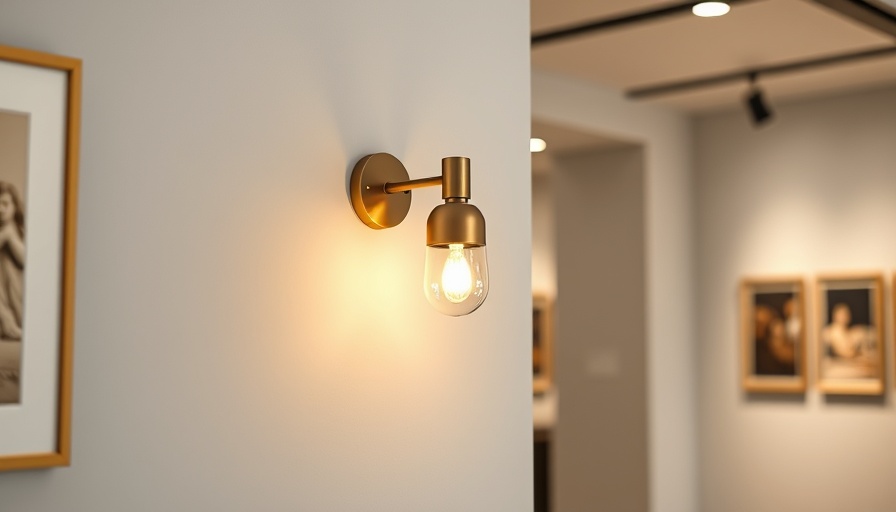
The Essential Role of Lighting in Art Display
For art enthusiasts and property developers alike, the significance of effective lighting cannot be overstated. Within both residential and commercial spaces, lighting serves as a critical component in showcasing art collections. Proper lighting enhances the overall aesthetic appeal and allows viewers to appreciate the vibrancy, details, and textures of each piece. The delicate interplay of light fosters an inviting atmosphere, making it crucial to select appropriate wall lights.
Impact of Lighting on Art Perception
Lighting can fundamentally alter an observer's experience of a piece of art. Warm light can evoke comfort and nostalgia, while cooler tones can create a modern or stark effect. Understanding how different settings impact viewer perception will enable commercial space designers and business owners to create spaces that resonate with visitors. For example, a gallery might employ picture lights to illuminate artworks effectively, highlighting their colors and textures without overpowering them. In contrast, public spaces could benefit from adjustable sconces that allow flexibility in spotlighting various artworks as needed.
Selecting the Right Wall Lights: A Practical Guide
When considering wall lights for art display, the objective is to achieve a balance between functionality and aesthetics. The design must complement the style of both the artwork and the surrounding decor. If your space features vibrant, colorful pieces, then warm white lights can enhance the overall visual experience. For minimalist pieces, consider cooler lights or recessed lighting to maintain a clean look while ensuring the artwork stands out. Understanding the nuances of light intensity is also critical—excessive brightness can lead to glare, while inadequate light can obscure the art’s finer points.
Creative Ways to Integrate Wall Lighting into Your Decor
Art lovers and property managers should recognize that the integration of wall lights goes beyond mere functional considerations—it allows for creative expression. For instance, selecting wall fixtures that captivate attention can serve as a conversation starter, bridging the gap between art and architecture. Enhanced lighting doesn't just illuminate; it can transform a space, making art collections feel more curated and intentional.
Future Trends in Wall Lighting for Art Displays
Looking forward, there’s a burgeoning demand for sustainable and energy-efficient lighting solutions dedicated to art exposure. As more businesses pursue sustainability in design, technologies like LED wall lights offer cost savings while producing less heat, making them ideal for delicate artwork. Integrating smart technology into lighting design promises greater flexibility, allowing property managers to dim or change color temperatures to match events, exhibitions, or the time of day, ensuring every piece remains a focal point.
Common Misconceptions About Wall Lighting
One prevailing misconception is that all art requires bright lighting to be appreciated. In reality, nuanced lighting can often make a significant difference. Different artworks demand unique lighting approaches, and stakeholders should remain receptive to experimenting with varying settings and fixtures to discover the most flattering presentation of their collections.
By understanding the intricate relationship between wall lights and art, business owners and designers can elevate their spaces significantly. Take the time to ensure each work of art is highlighted appropriately—it’s an investment that pays dividends in visitor engagement and enjoyment.
 Add Row
Add Row  Add
Add 




 Add Row
Add Row  Add
Add 

Write A Comment